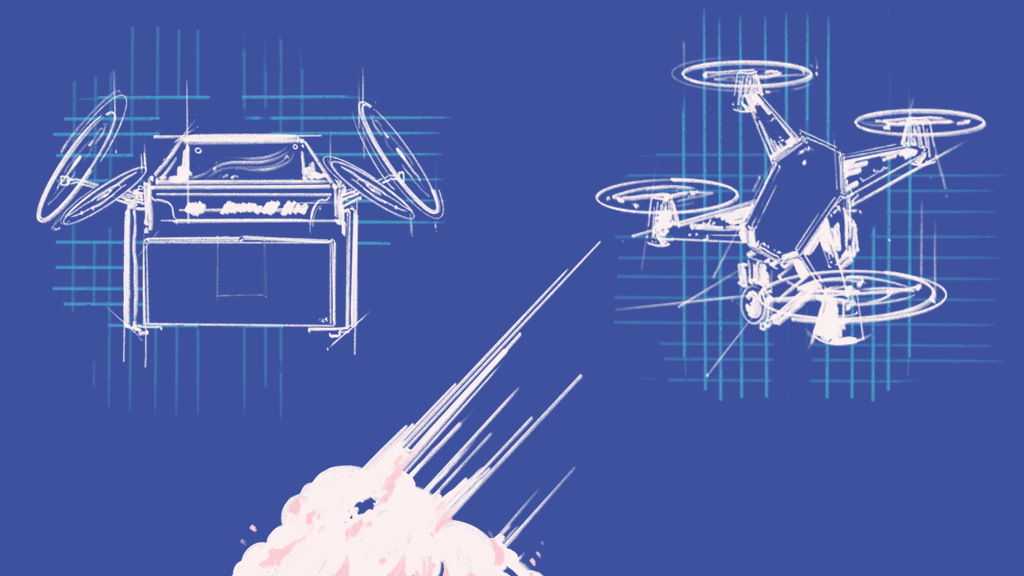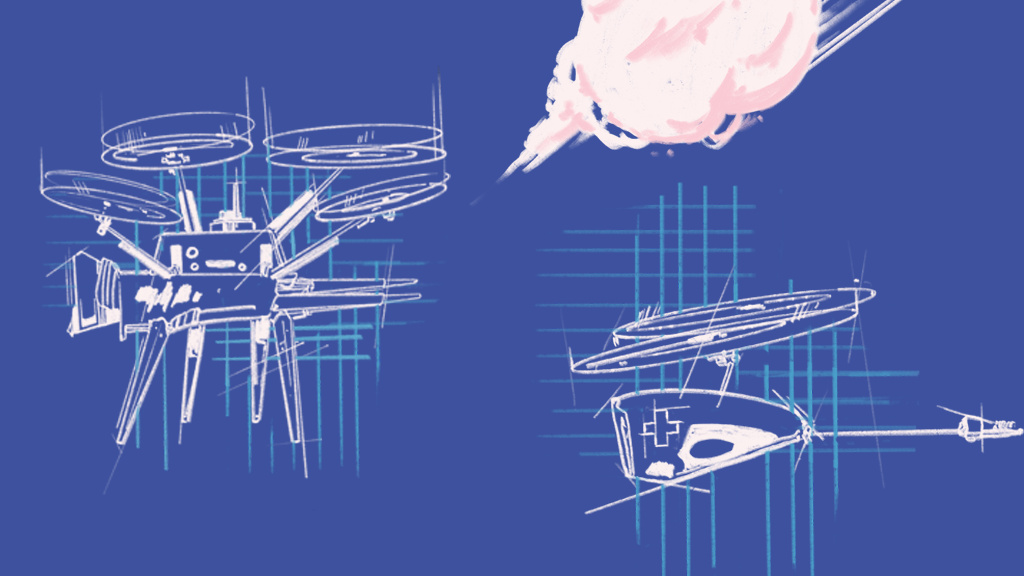Drones: From War to Peace Time
by Karina Le | published Mar. 7th, 2020
From the time they were drafts on blueprints, drones have been a hot topic in the realm of modern technology. Initially used as tools of war, their programming and usage have expanded into civilian life. But what does it mean for our society to normalize drone technology into our everyday lives?
Drones: An Introduction
The first image you might think about when you hear the word drone is the kind the U.S. government uses to drop bombs in other countries, such as when they were used in the Afghan War in 2001. Drones are often used in war zones to also help survey an area's surroundings as a replacement for soldiers.
"During the Obama administration, they handed off [surveillance of countries at war] to the CIA, who were not utilizing on the ground intelligence, and were instead using [drones]," Benajmin Banta, an RIT political science professor, explained.
Even before the Trump administration initiated a drone strike in Iran, the Obama administration was using drones as well to direct attacks and help the militia survey the grounds from the air. Yet, drones have become commercialized beyond warfare and can be found in any large electronics store. What other uses do they have outside of being a tool for war?
Carl Salvaggio, a professor of Imaging Science and the director of Digital Imaging and Remote Sensing Laboratory, explained some of the ways RIT has been making use of drone technology.
“I would say 90 percent of our [drone] usage right now is used for precision agriculture,” Salvaggio said.
Precision agriculture is a type of farming management system in which people observe and record farm data to see where the farm needs management. Drones record images for farmers to see how to improve productivity. This can include certain areas needing more water to grow or nitrogen for fertilization.
Salvaggio also said that drones have aided in simplifying our everyday lives. Often, you can see drones dropping off packages in lieu of the local postman.
Some innovators of drone technology even go as far as to see if they can integrate these mechanical aircraft to be better suited for medical emergencies.
“[Some drones] are equipped with defibrillators,” Salvaggio explained. “It has a camera and a laptop with a speaker, so somebody on the other end could talk somebody through a defibrillation.”
Though terrifying as the idea is, Salvaggio expressed that by using a drone ahead of an ambulance, it could save lives with the time it takes for a drone to arrive rather than waiting for emergency medical assistance.
“It could save minutes,” said Salvaggio. “The risk is worth it.”
Technology is Gray
Drone technology could be one of the many ways technology has eased our lives; however, Banta questions if that's all there is to it.
"Do [drones] make the decision to go to war too easy?" he asked.
"Do [drones] make the decision to go to war too easy?"
Whether we use drones in war zones, to spy on cities or actively drop bombs at the military's command, Banta takes a critical stance on how we accept drones as a part of our daily lives and the way we use them in and out of our country.
However, he also cautioned that we should avoid thinking of drones, or any technology, as either good or bad since it takes away from how they interact with us and our world. He explained his cautions through two perspectives: the deterministic and the neutral.
“When you think in a deterministic perspective, you want to think positively because it mandates you to be a certain way because of the technology around you,” he said.
On the other end of this caution, there is the neutral perspective, which accepts technology as simply a tool neutral from a good or bad morality. Banta argued that this could be equally as harmful.
"To empty technology of any kind of politics and say, 'It's just a tool' and 'We can use them for good and bad' is closer to the truth," he said. "But a nuclear weapon does one thing: it slaughters people."
Something needs to be done in terms of combating drones, and not just through physical violence. There have been anti-drone technologies in development to assist in times where drones aren’t used in positive ways.
“To disable a drone, you can fly a drone over the offending drone and drop a net to tangle it or even jam the drone’s GPS signal,” Salvaggio explained.
There are a variety of ways right now to combat drone technology from invading our private lives. There will continue to be advancements in this anti-drone technology for as long as drones are a part of the world. However, there is also a need for our legislation to make moves in regulating drones, Banta noted.
“Tech needs to force us to think in the long term.”
“We need to go back to human responsibility,” stated Banta. “We have to avoid these deterministic or neutral 'as a tool' perspectives to think critically of [drones].”
In the end, Banta said, we made drones ourselves and we have to accept the consequences of making new technology. They will remain in our society until a legal ban is announced.
No matter the technology, we have to think of ways to protect ourselves, while also reaping the rewards that come from advanced technology. Banta summarized it best through his critiques of advancing technology.
“Tech needs to force us to think in the long term,” he said.
This would include educating ourselves about obscure topics and understanding the ripples they’ve made in our society. Ultimately, no matter whether you decide you are someone who is pro- or anti-drones, their innovations have become a landmark that shows our advancements in technology.




